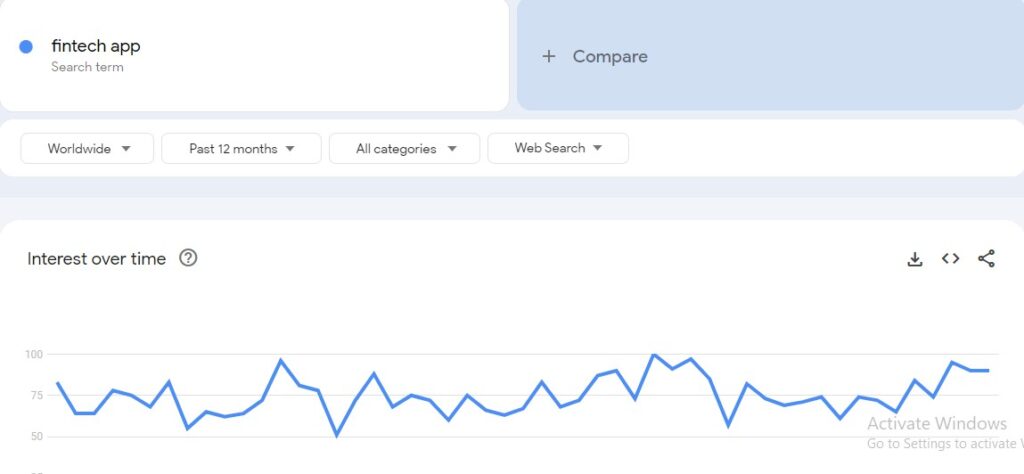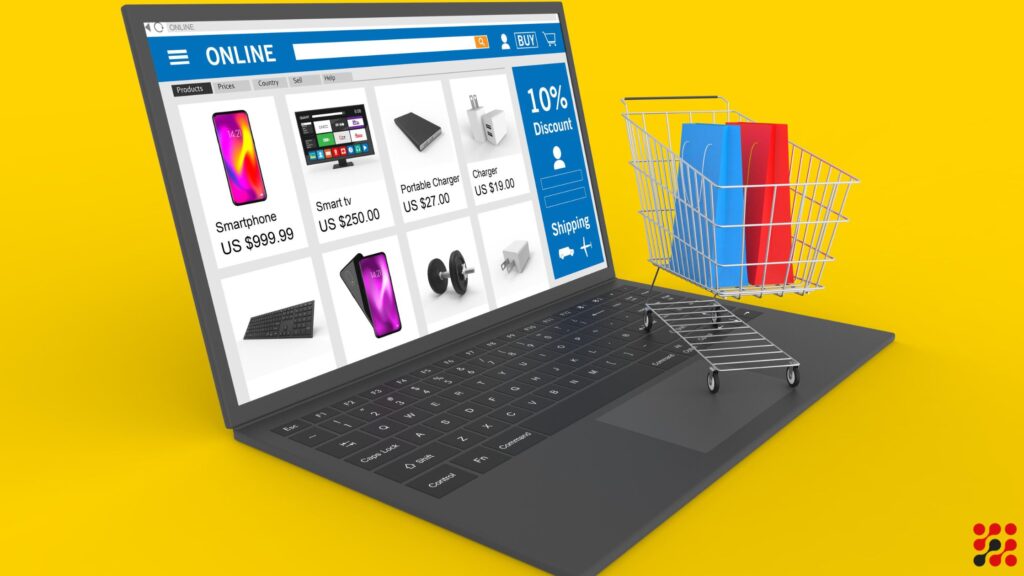Fintech App Development Cost – Overview
Venturing into the fintech app development is pretty exciting, but one big question pops up: “How much does it cost to build a fintech app” In this guide, we’ll break down the factors that affect the price and look at differences in fintech app development cost around the world. We’ll also discover ways to keep expenses reasonable without limitations in innovation.
Figuring out the cost to develop a fintech app isn’t fixed since it varies for each organization based on their unique needs. The total expense is influenced by factors like the type of app, its features, where the development happens, how it functions, how many stakeholders are in the whole process, and how long it takes to create.
If you want a custom FinTech app for safe online transactions, it could start at around $40,000 and take three to four months to develop.
On the other hand, a simple banking app might cost you between $20,000 and $40,000. For a FinTech app with the latest tech and advanced features, the price could be in the range of $50,000 to $90,000. If you’re thinking of a highly complex financial app, be prepared to spend up to $200,000 or more.
If you’re thinking of developing a Fintech app for your business, now is the perfect time. But, you might be curious about how much does it cost to build a fintech app and how to go about it. Don’t worry; we’ve got you covered with all the details about the price breakdown below.
How Much Does it Cost to Start a Fintech Company App for Startups, SMEs and Enterprises – BallPark Figures
Please note that these are general estimates, and the actual cost and timeframe can vary based on specific features, complexity, and the development team’s efficiency.
| FinTech App Type | Cost Range | Timeframe |
|---|---|---|
| Mobile Payment App | $40,000 – $80,000 | 3 – 5 months |
| Personal Finance App | $50,000 – $100,000 | 4 – 6 months |
| Peer-to-Peer Lending Platform | $60,000 – $120,000 | 5 – 7 months |
| Investment Management App | $70,000 – $150,000 | 6 – 8 months |
| Cryptocurrency Exchange App | $80,000 – $200,000 | 7 – 9 months |
| Robo-Advisory Platform | $90,000 – $180,000 | 8 – 10 months |
| InsurTech App | $100,000 – $250,000 | 9 – 12 months |
| Budgeting and Saving App | $40,000 – $80,000 | 3 – 5 months |
| Digital Wallet App | $50,000 – $100,000 | 4 – 6 months |
| Blockchain-Based Payment App | $70,000 – $150,000 | 6 – 8 months |
Mobile Payment App
Financial transactions are simplified with mobile payment apps. With an eye-candy interface and authentic security features, these apps redefine the way we handle financial transactions.
Real Life Example: Paypal
Personal Finance App
Managing finances becomes efficient with personal finance apps. A personal finance app revolutionizes budgeting, expense tracking, and financial planning.
Real Life Example: Mint
Mint`s user-friendly design helps individuals manage their money, track spending, and achieve financial goals, providing valuable insights into personal financial habits.
Peer-to-Peer Lending Platform
Facilitating direct lending between individuals.
Real Life Example: LendingClub
LendingClub transforms lending dynamics by connecting borrowers with individual investors. This peer-to-peer lending platform offers an alternative to traditional banking, providing loans with competitive rates and a complete borrowing process.
Investment Management App
Tailored for effective investment strategies.
Real Life Example: Betterment
Betterment, an investment management app, leverages technology to automate investment strategies. It provides users with personalized investment portfolios, automated rebalancing, and goal-based financial planning, making wealth management accessible to all.
Cryptocurrency Exchange App
Enabling smooth crypto transactions.
Real Life Example: Coinbase
Coinbase, a leading cryptocurrency exchange app, simplifies the buying, selling, and trading of digital assets. With user-friendly interfaces and security measures, these apps introduce individuals to the world of cryptocurrencies with ease.
Robo-Advisory Platform
Automating investment decisions, costs for robo-advisory platforms range from $90,000 to $180,000.
Real Life Example: Wealthfront
Wealthfront’s robo-advisory platform combines automation and algorithms to manage investments efficiently. These platforms offer diversified portfolios, automatic rebalancing, and personalized financial advice, making wealth management accessible to a broader audience.
Insurance
Real Life Example: Lemonade
Lemonade disrupts the insurance industry with its InsurTech app, providing transparent insurance services. With AI-driven processes, Lemonade improves policy issuance and claims, creating a customer-centric approach to insurance enrollment.
Contact Us for Any Health Insurance Software Development Services
Budgeting and Saving App
Simplifying budgeting and saving, these apps cost between $40,000 and $80,000, with development completed in 3 to 5 months.
Real Life Example: YNAB (You need a Budget)
YNAB, or You Need A Budget, transforms financial habits with its budgeting and saving app. By emphasizing proactive budgeting, YNAB helps users gain control of their finances, reduce debt, and build sustainable savings habits.
Digital Wallet App
Offering secure digital transactions, digital wallet apps cost between $50,000 and $100,000, developed in 4 to 6 months.
Real Life Example: Apple Pay
Apple Pay, a digital wallet app, allows users to make secure transactions with their mobile devices. These apps offer convenience, security, and integration with various payment methods.
Blockchain-Based Payment App
Real Life Example: Ripple
Ripple, a blockchain-based payment app, provides fast and cost-effective cross-border transactions. With its decentralized ledger technology, Ripple transforms the traditional payment landscape, offering a more efficient and transparent solution.
How Much Does it Cost to Start a Fintech Company App
Developing a FinTech application involves a strategic and systematic approach. Here are 10 essential steps to guide you through the process.
Please note that these are rough estimates, and actual costs may vary based on the specifics of your project and the expertise of the professionals you engage. It’s recommended to consult with mobile app development experts and development teams to get more accurate cost projections for your unique FinTech application.
Define Your Purpose and Objectives
Clearly outline the purpose of your FinTech app and set specific objectives. Identify the financial services you aim to provide and the problems your app will solve.
Approx Cost: $1,000 – $5,000
Conduct Market Research
Understand your target audience, market trends, and competitors. Analyze user needs and preferences to tailor your app accordingly. Identify gaps in the market that your FinTech app can address.
Approx Cost: $2,000 – $5,000
Regulatory Compliance
Comply with financial regulations and obtain the necessary licenses. FinTech apps deal with sensitive financial data, and adhering to regulatory requirements is important to building trust among users.
Approx Cost: $20,000 – $50,000+
Design a User-Friendly Interface
Create an intuitive and user-friendly interface. Prioritize simplicity and ease of navigation.
Approx Cost: $10,000 – $50,000
Select Appropriate Technology Stack
Choose the right technology stack based on your app’s requirements. Decide whether to build a native app for specific platforms (iOS, Android) or opt for cross-platform or hybrid development.
Approx Cost: $20,000 – $100,000
Focus on Security
Implement military-grade security measures to safeguard financial transactions and user data. Utilize encryption, secure authentication methods, and follow best practices for securing financial applications.
Approx Cost: $15,000 – $50,000
Integrate APIs and Third-Party Services
Leverage Application Programming Interfaces (APIs) and integrate with relevant third-party services. This can include payment gateways, identity verification services, and financial data providers.
Approx Cost: $10,000 – $30,000
Develop Core Features
Build the core features of your FinTech app, such as account creation, transaction processing, fund transfers, and real-time analytics.
Approx Cost: $50,000 – $200,000
Testing and Quality Assurance
Conduct thorough testing to identify and rectify any bugs or issues. Perform usability testing to improve a smooth user experience. Address security concerns and compliance with industry standards.
Approx Cost: $10,000 – $50,000
Launch and Continuous Improvement
Launch your FinTech app on the chosen platforms. Gather user feedback and continuously monitor app performance. Implement updates, add new features, and refine existing ones based on user input and changing market needs.
Approx Cost: $10,000 – $50,000 (post-launch maintenance)
Remember, the development of a FinTech app is an iterative process. Stay responsive to user feedback, technological advancements, and market dynamics to ensure the ongoing success and relevance of your FinTech application.
Fintech App Development Cost Factors
Understanding the cost of building a FinTech app involves various factors. Here are 10 key factors that influence the cost to develop fintech app.
Product or MVP
The scope of work and the level of product complexity are two important aspects. The number of features and the complexity of the app’s logic affect the development effort and time.
UI/UX Design
Investing in a user-friendly interface enhances the user experience, improving the app’s success. Proper app construction, font selection, language simplicity, and effective use of white space contribute to a design.
Development Team Location
The geographical location of the development partner influences fintech app development cost. Hourly rates of developers vary globally, with North America and Europe typically having higher rates than Latin America, Pakistan India, and Africa.
Timelines
Timeframes directly impact cost to develop fintech app, with shorter delivery times requiring increased teamwork and, consequently, higher costs. The type of FinTech app being developed also plays a role, with banking apps requiring 2,000-3,500 hours and personal finance apps needing 1,500-2,500 hours.
| FinTech App Type | Timeframe | |
|---|---|---|
| Mobile Payment App | 3 – 5 months | |
| Personal Finance App | 4 – 6 months | |
| Peer-to-Peer Lending Platform | 5 – 7 months | |
| Investment Management App | 6 – 8 months | |
| Cryptocurrency Exchange App | 7 – 9 months | |
| Robo-Advisory Platform | 8 – 10 months | |
| InsurTech App | 9 – 12 months | |
| Budgeting and Saving App | 3 – 5 months | |
| Digital Wallet App | 4 – 6 months | |
| Blockchain-Based Payment App | 6 – 8 months |
How much does it cost to build a fintech app with Maintenance & Support
Continuous app maintenance is important for keeping up with industry standards and user expectations. Regular updates and feature upgrades contribute to the ongoing fintech app development cost india.
How much does it cost to start a fintech company with Digital Analytics Tech Stack
Digital analytics in FinTech apps is essential for analyzing consumer financial data and offering valuable insights. The complexity of digital analytics directly impacts development costs.
Blockchain
Integrating blockchain in FinTech apps, for peer-to-peer payments, adds transparency and efficiency. The inclusion of blockchain can significantly affect the fintech app development cost.
Artificial Intelligence
Artificial intelligence in FinTech apps enhances user experience with features like ai chatbots, financial planning, fraud detection, and efficient transactions. The integration of AI contributes to the cost to develop fintech app.
Frameworks and Libraries
The choice of programming languages and tools influences the cost of FinTech app development. Whether opting for native, cross-platform, or hybrid development approaches and the associated technologies affect the budget.
How much does it cost to build a fintech app with Custom API Integration
The number and complexity of features integrated into the FinTech app impact development costs. Common features include biometric authentication, real-time analytics, multi-currency support, and secure payment gateways.
5 Ways to Reduce Fintech App Development Cost
These challenges require a systematic approach, combining technological expertise, regulatory acumen, and a user-centric mindset. Fintech app developers must stay agile, adapting to evolving security threats, and regulatory, and user expectations to create resilient and successful financial solutions.
Security Concerns
The handling of sensitive financial data demands security measures. Fintech apps are attractive targets for cyber threats, including fraud, data breaches, and identity theft.
Regulatory Compliance
Financial applications operate within a complex web of regulations. Meeting compliance standards can be challenging, as regulations may vary across jurisdictions and geographical locations.
User Trust and Adoption
Gaining and maintaining user trust is a constant challenge. Users are often skeptical about sharing financial information and using new financial tools. Fintech apps must prioritize transparent communication, clear privacy policies, and educate users about the security measures in place to build trust.
Technological Integration
Fintech apps often rely on integrating with various technologies and third-party services, such as payment gateways, APIs, and data providers. Compatibility issues and downtime during integrations pose significant challenges.
Scalability and Performance
As Fintech apps gain traction, they must handle an increasing volume of transactions and user data. Scalability becomes a concern for the app’s performance under growing user loads. Balancing efficiency with scalability requires careful architectural planning and continuous monitoring.
TechnologyAlly Is Your Best Fintech App Partner
TechnologyAlly emerges as your top choice for developing Fintech apps. We blend advanced technology with financial know-how to create cutting-edge solutions. Our team, skilled in overcoming industry challenges, top-notch security, regulatory compliance, and user confidence.
From strong encryption to smart integrations, we design solutions with scalability and performance in mind. Count on TechnologyAlly as your strategic ally, guiding you through Fintech complexities. Our custom, user-friendly apps redefine the future of financial technology.
Choose TechnologyAlly for your Fintech success – where innovation meets reliability.
Fintech App Trend in 2024
The world of finance has undergone a massive transformation with the rise of Fintech, a sector that’s now worth billions of dollars. This innovative technology has empowered financial institutions to offer fresh and creative services, fueling rapid growth.
As technology progresses and the fintech app development cost in india decreases, the potential for more changes in the industry becomes vast. Projections suggest that the Fintech market could reach a whopping $699.50 billion by 2030, while the number of digital banking users in USA alone is expected to rise from 197 million in 2021 to 217 million in 2025.
So, what does all this mean? It signals a remarkable surge in the Fintech app industry!

Source: Google
Cost to Develop Fintech App – FAQs
What role does regulatory compliance play in Fintech app development costs?
Achieving regulatory compliance involves legal consultations and additional development efforts, contributing to higher costs, but it is crucial for building user trust and avoiding legal issues.
Are there ongoing costs after the Fintech app is developed and launched?
Yes, ongoing costs include maintenance, updates, and feature scalability. Regularly updating the app is important for security, functionality, and staying competitive in the market.
How can I reduce Fintech app development costs without compromising quality?
Prioritize features based on MVP (Minimum Viable Product), consider outsourcing to regions with lower development costs, and opt for open-source technologies when possible.








